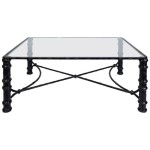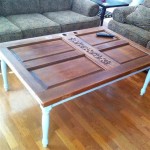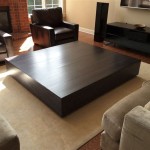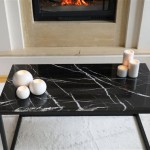How To Distress a Coffee Table with Chalk Paint and Paper
Distressing furniture is a popular technique that gives pieces a vintage or antique look. Chalk paint, known for its matte finish and ability to adhere to various surfaces, is a favorite choice for distressing. This technique involves creating the appearance of wear and tear, revealing layers of paint and wood beneath. The use of paper in distressing adds a unique dimension, allowing for more controlled and detailed aging effects.
Distressing with chalk paint and paper is a relatively simple process, even for beginners. The tools and materials are readily available, and the technique itself is adaptable to different styles and levels of distressing. Whether you want to create a subtle aged look or a heavily distressed piece, this method offers flexibility and control.
Preparing the Coffee Table
Before you start distressing, it's crucial to prepare the coffee table properly. Ensuring a smooth surface and clean canvas will allow the chalk paint and paper to adhere effectively. Clean the table thoroughly to remove any dust, grime, or old finishes. Use a damp cloth or a specialized wood cleaner, depending on the table's material. Sanding the surface lightly might also be necessary to remove any rough patches or existing finishes.
After cleaning, consider whether the table requires any repairs or patching. Fill any holes or cracks with wood filler, allowing it to dry completely before proceeding. If you're working with a table that has a varnish or polish, it might be necessary to degloss the surface with a fine-grit sandpaper. This will help the chalk paint adhere better, ensuring a consistent and durable finish.
Once the table surface is prepped, protect your working area with drop cloths or plastic sheeting to prevent any paint spills or dust from staining the floor. This will also help keep your workspace clean and organized throughout the distressing process.
Applying the Chalk Paint
When choosing a chalk paint color, consider the overall style you want to achieve. For a more subtle look, choose a color that complements the existing wood tone. If you want a bolder distressed effect, select a contrasting color. Apply the chalk paint with a brush or roller, using even strokes and covering the entire table surface.
Allow the chalk paint to dry completely before proceeding. To ensure the paint is sufficiently dry, it's advisable to wait at least 24 hours. Once the paint is dry, you can begin distressing.
Distressing with Paper
The key to distressing with paper lies in the choice of paper and the application technique. Use sandpaper for larger areas or create specific effects with different types of paper like:
Sandpaper:
Use fine-grit sandpaper to create a subtle distressing effect. Rub the sandpaper lightly over the edges and corners of the table to reveal the wood underneath. For a more pronounced effect, use a medium-grit sandpaper.Scouring Pads:
Use fine-grit scouring pads to create a subtle and controlled distressing effect. Rub them lightly over the table surface, focusing on corner edges and any areas you want to give an aged appearance.
Newspaper:
Crumble newspaper into balls and rub them gently over the table surface. This creates a more random and textured effect that resembles years of wear and tear.
Wet Paper Towel:
Dampen a paper towel and rub it over the surface of the table. This softens the chalk paint and adds a subtle layer of distress. You can also create a "wipe-off" effect by applying a coat of wax or sealant over the distressed surface, then using a wet paper towel to remove some of the wax, revealing areas of the distressed paint.
Crumpled Paper:
Crumple a piece of paper and use it to create scratch marks or lines on the table surface. This creates a more authentic and haphazard look, replicating the wear and tear that comes with age.The amount of distressing you choose will depend on your personal preference and the style you are going for. Some people prefer a subtle distressed look, while others want a more dramatic effect. The key is to experiment and see what works best for your specific project.
Finishing Touches
After distressing, there are a few additional steps that can enhance the look of your coffee table. Applying a clear sealant or wax will protect the chalk paint and enhance its durability. Choose a sealant or wax that complements the distressed effect.
A topcoat of wax will give the table a softer, more vintage look, while a sealant will provide a harder, more durable finish. You can also use a dark wax to add depth and shadow to the distressed areas.
Finally, consider adding some decorative elements to your coffee table, such as hardware, knobs, or even paint accents. These details can help personalize your piece and complement the overall style.

Coffee Table Makeover With Chalk Paint

Distressed Coffee Table A Revisit Rework The Painted Hive

Easy Chalk Paint Coffee Table Makeover You Need To See Sunnyside Home

How To Whitewash Distress Furniture Diy Farmhouse Coffee Table

How To Achieve The Perfect Weathered Look House By Hoff

Distressed Coffee Table A Revisit Rework The Painted Hive

Chalk Paint Coffee Table Makeover Step By Diy Guide Bricks N Blooms With Stacy Ling

Distressed Coffee Table A Revisit Rework The Painted Hive

The Beginner S Guide To Distressing With Chalk Paint By Annie Sloan Thinking Closet

How To Distress Wood With White Paint Thistlewood Farm
Related Posts








